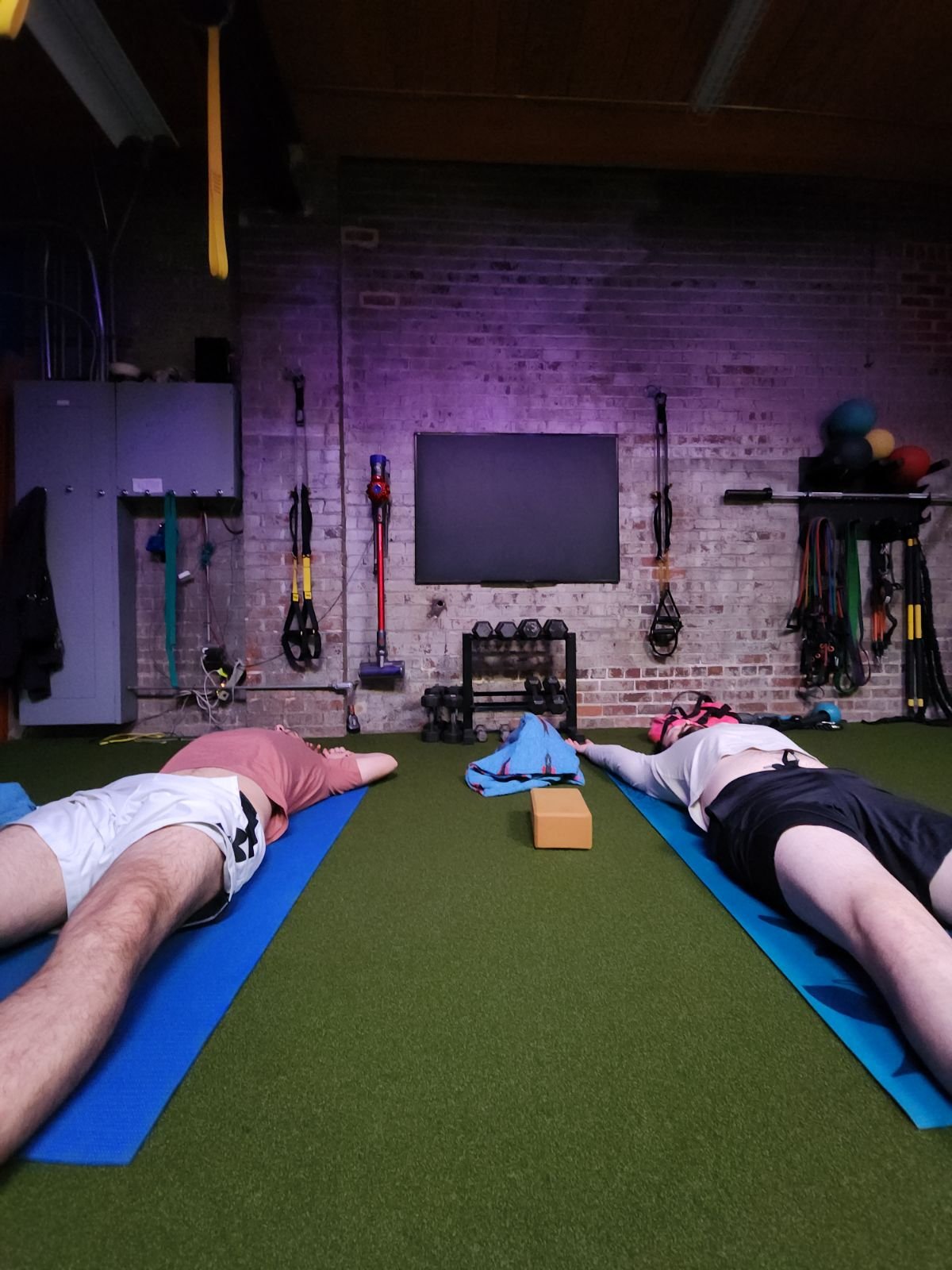Letting the breath flow for a more intentional workout
When I first start with a new client, I observe how they breathe. I watch them breathing naturally and while they are doing exercises. The breath is something that is with us always, and sometimes we don't pay attention to it. Something empowering about the breath is that even though it works on its own to keep us living, we can also manipulate the breath for our wellbeing.
I've never done heavy lifting, but it is my understanding that powerlifters utilize the pressure from the breath to create a brace to find stability in their body while lifting heavy weights. This can create a tremendous amount of pressure down on the pelvic floor and cause issues and discomfort.
For the non-powerlifter, I encourage you to focus on letting your breath move. Your breathing can change your posture, affect how you feel emotionally, increase or alleviate stress, and improve your stability while exercising. It can also release unnecessary tension.
My basic guidance is to exhale during the work. A simple example is a bicep curl. As you are curling, exhale. I encourage exhaling out of the mouth. This is very effective with core exercises, and to include the core while doing other exercises. Abs tend to be a common weakness, and besides, who doesn't want toned abs?
The inhale can be a powerful tool as well. Your ribcage was made to move! If you aren't breathing deeply, or if you focus on "belly breathing", your ribs can get stuck. With stuck ribs comes stuck energy, immobility, and discomfort. This can then affect your breathing, and it becomes a cycle. I also use the inhale as a "massage from the inside". When people have low back pain - I invite them to come into child's pose with their knees underneath them. With the stomach blocked by the knees, it's easier to breathe into the back. Taking a deep inhale into the shoulderblades or low back can put pressure on these tense areas, giving them a nice stretch from the inside.
See our FGF fitness training services.
You can try this now: take your hands to the sides of your ribcage. With an inhale, expand your ribs 360 degrees - to the front, sides, and back. Inhale deeper into wherever it feels stuck (possibly the back and/or sides). After taking 5 - 10 breaths like this, let's focus on the exhale. Start to exhale out of the mouth as if you're blowing through a straw or into a balloon. As you exhale, press your ribs in towards your spine. See how much air you can exhale as you bring your ribs in. Can you feel your abs engaging as well? Knit your ribs together and bring them towards your spine. This is a great practice for assessing and expanding your breath and your ribcage. You can use this same breath during your workout.
I encourage allowing your breath to flow and fuel your fitness!


